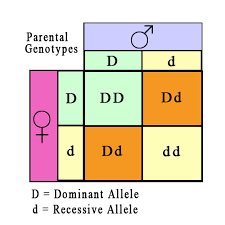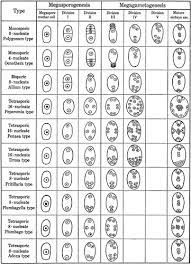PHYSIOLOGICAL, BIOCHEMICAL AND OTHER CHANGES OCCURED IN SEED GERMINATION
PHYSIOLOGICAL, BIOCHEMICAL AND OTHER CHANGES OCCURED IN SEED
GERMINATION
Water Uptake:
Seed germination starts with the imbibition of water by dry seed coat which is purely a physical process. Various hydrophilic groups such as-NH, OH, COOH etc., of proteins, polymeric carbohydrates etc., found in the seed coat attract dipolar water molecules and form hydrated shells around them resulting in the swelling of these substances. This water uptake by swelling is followed by intensive water uptake associated with germination. Due to imbibition of water the seed coats become (i) more permeable to O, and water and (ii) less resistant to outward growth of the embryo.
The uptake is accompanied by rapid increase in respiration rate of embryo. Initially there may be anaerobic respiration but it is soon replaced by aerobic one due to availability of O. As compared to dry seeds, the uptake of O, in germination seeds may rise in case of cereals from 0.05 μ 1/g tissue/hr to 100 μl/g tissue/hr within very short period after germination when water content has reached about 40%. Sucrose is probably the respiratory substrate at this stage which is provided by endosperm.
As germination progresses there is mobilization of reserve materials to provide (i) building blocks for the development of embryo, (ii) energy for the biosynthetic processes, and (iii) nucleic acids for control of protein synthesis and overall embryonic development. Changes in these components during seed germination are described below
(i) Nucleic Acids:
In monocots during the imbibition stage
of seed germination there is rapid decrease of DNA and RNA content in the
endosperm with a simultaneous increase in the embryonic axis probably due to
their transportation as such. Appreciable amount of RNA appears in the aleurone
layer after about 16 hours which is probably due to its de novo synthesis.
Higher concentration of RNA (and also protein) in the embryonic axis precedes
cell division. Due to more cell divisions the DNA content is increased.
Insoluble carbohydrates like starch are the important reserve food of cereals in the endosperm. During germination starch is hydrolyzed first into maltose in the presence of a-amylase and B-amylase and then the maltose is converted into glucose by maltase. The glucose is absorbed by the scutellum, converted into soluble sucrose and trans ported to growing embryonic axis. During germination the embryonic axis secretes gibberellic acid into the aleurone layer which causes de novo synthesis of a-amylase. This enzyme is not found in ungerminated seeds. Removal of gibberellic acid during this period results in rapid fall of a-amylase synthesis. The latter can be restored by supplying external gibberellic acid. The gibberellic acid induced synthesis of a-amylase is countered by abscisic acid. In contrast to a-amylase. B-amylase is already present in the seed in inactive form which gets activated during germination. The activity of the enzyme maltase is also regulated by gibberellic acid.
(iii) Lipids:
Many plants like castor bean, peanut etc. store large amount of neutral lip ids or fats as reserve food in their seeds. During germination the mobilization of these fats is brought about by hydrolysis of fats to fatty acids and glycerol by lipases and B-oxidation of fatty acids to acetyl-CoA. The activity of lipases is greatly stimulated by imbibition and in some cases there may even be de novo synthesis of these enzymes which is probably triggered by gibberellic acid. Some of the acetyl-CoA is converted into sucrose via the glyoxylate cycle and is transported to the growing embryonic axis. Synthesis of the two key enzymes of glyoxylate cycle (i.e., isocitratase and malate synthetase) takes place de novo during the early stages of germination. Their concentration is increased during the stage when fats are being actively converted into sucrose. They disappear when all the stored fat has been consumed and the seedling has developed the photosynthetic system.
(iv) Proteins:
Some plants store proteins as reserve food in their
seeds in the form of aleurone grains. Mobilization of these proteins involves
their hydrolytic cleavage into amino acids by peptidases. These enzymes, in
part, are synthesized de novo as the germination starts a-amylase is
synthesized in cereals. The amino acids may either provide energy by oxidation
after deamination or may be utilized in the synthesis of new proteins. in the
same way as During seed germination there is active synthesis of enzymes and
other proteins and also the formation of different RNA species for their
synthesis. For the synthesis of these proteins polysomes are involved. It is
not definite whether these are already present in the seed or are synthesized
during germination. Moreover, it is also not certain whether polysomes are
synthesized de novo or from pre-existing m-RNA.
A number of inorganic materials such as phosphate, calcium, magnesium and potassium are also stored in seeds in the form of phytin. These materials which may activate a number of important enzymes are liberated during germination due to the activity of various phosphatases including phytase.
Other changes:
Emergence of seedling out of the seed coat:
All these changes described above gradually result in splitting of seed coat and emergence of the growing seedling. First, the radicle comes out and grows downward, then plumule comes out and grows upward. Due to continued growth of this seedling, the latter comes out of the soil, exposed to light and develops its own photosynthetic apparatus. The splitting of seed coat may take place either
(i) by imbibitional pressure or
(ii) by internal pressure created by the growing primary root or (iii) by hydrolytic enzymes which act on cell wall contents of seed coat and digest it e.g., cellulase, pectinase etc. Sometimes the seed coat may be extensively rotted by the activity of micro-organisms in the soil.








Comments